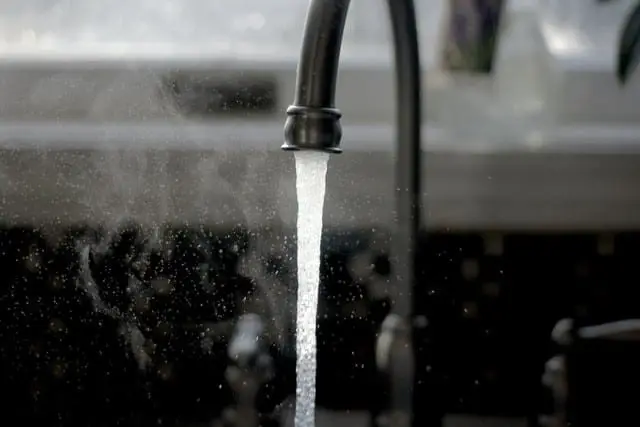A plumbing inspection is an all-inclusive examination of your plumbing system. An inspector will comprehensively check:
- All plumbing pipes, including indoor, outdoor, sewage, and supply lines
- Toilets
- Faucets and sinks
- Bathtubs and showers
- Water heaters
- Outdoor bibbs
A standard home plumbing inspection involves either a trained plumber or a home inspector.
Why you should get a plumbing inspection
A standard home inspection does not include a comprehensive inspection of your plumbing. A typical home inspection only investigates whether drains are operational, toilets flush, and faucets are functioning. A home plumbing inspection will cover a lot more than that. There are a few reasons why you would want to get a plumbing inspection.
Protecting your home from plumbing accidents
Damage to pipes, minor leaks, or a clogged drain can lead to extensive damage to the home. Repairs can be very time-consuming and costly. During winter, you want to ensure that your plumbing is in tip-top shape, and any plumbing accident in the winter is stressful and can be dangerous. Regular, seasonal plumbing inspections will help ensure your home plumbing system is operating correctly.
Plumbing inspection for buying or selling a home
Buying a home is a considerable investment, and ensuring your investment is in the best condition possible by having a plumbing inspection on top of a home inspection will enable you to get ahead of any issues. For the seller, you can provide an extra selling point by providing the buyer with evidence that your home is fully functional.
Professional home plumbing inspections
A professional plumbing inspection is performed by a plumbing expert who works solely within the industry. These inspections are more detailed and lengthier than a home plumbing inspection and will include a more in-depth analysis of the home’s water filtration system, supply lines, and drains.
The inspections will also include investigating above-ground exposed plumbing and traps underneath the kitchen, bathroom, and laundry room sink. The professional plumbing inspector will look at shut-off valves, sump pumps, water tanks, and water heaters to ensure everything operates as it should. Some professional plumbing inspections confirm that everything is currently up to the latest building codes.
There are some distinct differences between a home inspector and a professional plumb inspector.
What does a home inspector look for during a plumbing inspection?
A home inspector looks at the main plumbing components in a home, and it’s not as in-depth as a complete professional inspection. The main components they’ll check include:
- All fittings and pipes will be checked for leaks to confirm that they’re connected correctly.
- The main water shut-off valve will be located and identified.
- The water heater, venting, and connections will be confirmed to be in good working order.
- All toilets will be flushed to confirm that they’re not leaking and that the tank is filling properly.
- Sinks, tubs, showers, and toilets will be tested to confirm they drain correctly.
- Drain, waste and vent systems, and fixtures will be visually inspected.
- Drainage sump pumps are tested to confirm they have accessible floats.
- Any deficiencies or issues with the water supply are inspected and noted.
What does a plumbing professional look for during a plumbing inspection?
During a professional plumbing inspection, the inspector will look for the following items:
- The water heater and/or tankless water heater will be carefully inspected to confirm that the pilot light is working correctly and that all connections are secure and properly installed. Pressure relief valves will be tested, and water temperatures will be checked.
- All toilets will be checked to make sure they flush at a good rate and that the tank refills quickly and to the correct level. Flappers and other parts will also be inspected.
- Every pipe and fitting will be inspected thoroughly and checked for damage, cracks, and leaks.
- Sink and tub faucets, showerheads, sink plumbing, and drains will be checked for leaks or slow drainage.
- Outdoor hose bibs should also be inspected for leaks, fitting conditions, and proper freeze and frost protection.
- The main water shut-off valve will be located and checked to confirm that it’s working.
- A video camera inspection of the sewer pipes will be performed to identify any cracks or signs of misalignment to prevent collapse or blockage.
- Any home water filtration systems will be inspected.
- Fire hydrants near the home will be checked for leaks.
- The sump pump will be inspected to confirm it’s working and that all mechanisms are in place.
Average cost of a plumbing inspection
The average cost of a plumbing inspection will depend on the type of inspection you’re getting, but this will typically be between $200 and $1000+. For example, if the plumbing is part of a whole-home inspection when buying or selling a home, it will be included in the total home inspection price.
For professional plumbing inspections that go more in-depth than a traditional home inspection, you could pay around $200 to $300. If your professional plumbing inspection includes special equipment like sewer cameras, you should be prepared to pay extra. The sewer line inspection cost is typically an additional $250 to over $1,000, depending on the plumbing company and the equipment they use.
Keep this information in mind so you can choose the type of plumbing inspection for your home that’s right for you.

